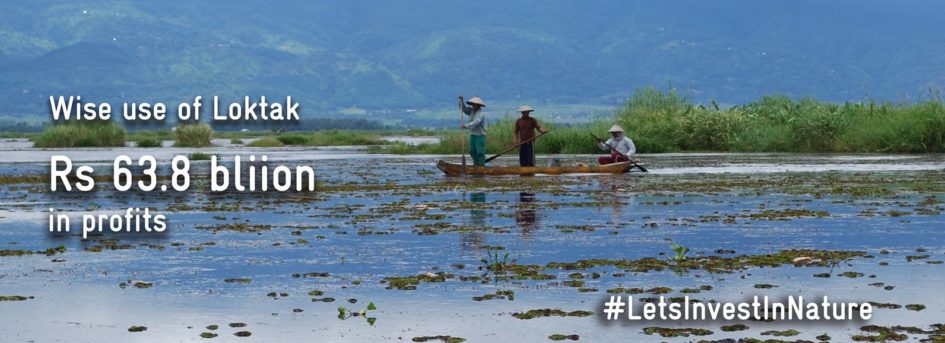Shubhangi Singh: In a country as diverse as India where the mountain meets the ocean and the deserts blend into forests, one hallmark of beauty that is often left out of the travel catalogues is the outstanding Loktak Lake in Manipur.
Spread over 469 sq. km. in the northeastern state of Manipur, Loktak wetlands complex is the lifeline of the state. Being the largest freshwater lake in India, this wetland is teeming with life. Livelihoods of over 100,000 people of Manipur depend on resources that are found here. Incredibly enough, Loktak is host to over 233 species of aquatic plants, over a hundred different species of migratory birds and several animal species, including the endangered Manipuri brow-antlered deer or the Sangai deer. This capacity to nurture a diverse bio-environment makes Loktak complex not only of a key economic significance but also puts this lake on the map for another distinctive reason: The Phumdi. With its unique floating vegetation called Phumdi, the lake is known to be the only floating lake in the world. Phumdi are like floating mats of vegetation which are a characteristic feature of these wetlands and that which help maintain water quality by trapping nutrients present in the lake. Almost completely solid in it’s form, these floating mats act as surfaces for the locals to construct their homes over, run small shops and businesses out of. It is on these very Phumdis present on the lake that one would be able to visit the only floating National Park in the world– The Keibul Lamjao National Park.
Like in the case of any well-preserved natural water body, it is the seasonal rising and falling of the water levels that is responsible for the existence of this rich and diverse natural capital that is present in the lake. In recent years, poor understanding of the seasonal flows of water and narrow focus on hydropower generation has transformed the naturally fluctuating lake into a mere reservoir. Regulating the wetlands for hydropower generation has led to an alteration in the ecology of the lake’s ecosystem resulting in long-term damage to the wetland. Compared to it’s thriving past, Loktak seems to be sitting on the very fringes of being transformed into a reservoir with, relatively, marginal to insignificant eco-system existing within itself. Apart from the depletion of livelihood and the floating houses that the Phumdi supports (in the list of losses incurred due to indiscriminate use of hydropower from the lake) one could add the loss of the only floating national park – in the process– bidding farewell to it’s several inhabitants.
So, while we can not completely overlook the significance of developmental undertakings and the possible benefits these projects could have, we would have to be more aware of the consequences these enterprises may have – on economics as well as on ecosystem. In order to justify the undertaking of large scale project that may impact local lives and livelihood, we’d have to look to incorporate the true value of nature into our developmental project planning. Finally, while on the subject of National Parks, we’d suggest you plan your holiday living a floating life amongst the re-discovered Sangai deer and magnificent sightings of the regal rock pythons.

